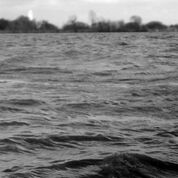There’s Something in the Water
This text is excerpted from an ongoing project by Tia Simone-Gardner. In this experimental documentary, they look at the relationship between Blackness and the Mississippi River as a collision of ideas, cultural practices, political geographies, and intimacies. This manner of working emerges out of a Black feminist practice of unsettling how we think and know place.
M – I – CROOKED LETTER CROOKED LETTER –
I CROOKED LETTER CROOKED LETTER
I HUMP-BACK – HUMP BACK –
I
 I’m still not sure if we were
I’m still not sure if we were
singing about the land or the
water.
they are not always so distinct,
the land and the water.
…perhaps it
was both.
Neither are the land, water,
and body always
distinguishable from one another.
Like land and water, the Black body was remapped. Rearticulated through a range of regimes: racial capitalism, colonization, labor exploitation, into a site of extraction. The Black body was, is, undifferentiated from the land and water that are habitually used to make life, for some, more livable.
“…we must now consider the roads, rivers, and showrooms where broad trends and abstract totalities thickened into human shape.”
Moved, overworked, defiled abstracted as an object of trade, the Black body is an import- ant feature, like the pot ash tree or the bald cypress of the Southern landscape. And the river is a part of this strange abstraction.
Reference
The text is excerpted from a longer piece, the full citation of which is:
Quoted text from: Johnson, Walter, Soul by Soul: Life Inside the Antebellum Slave Market, 1999.
